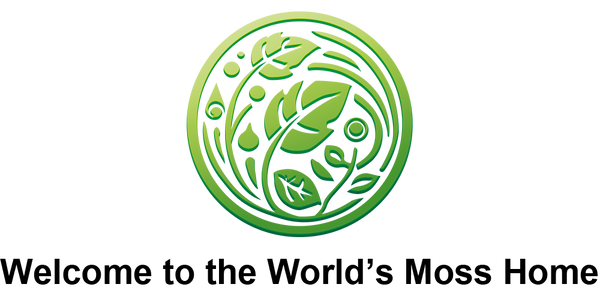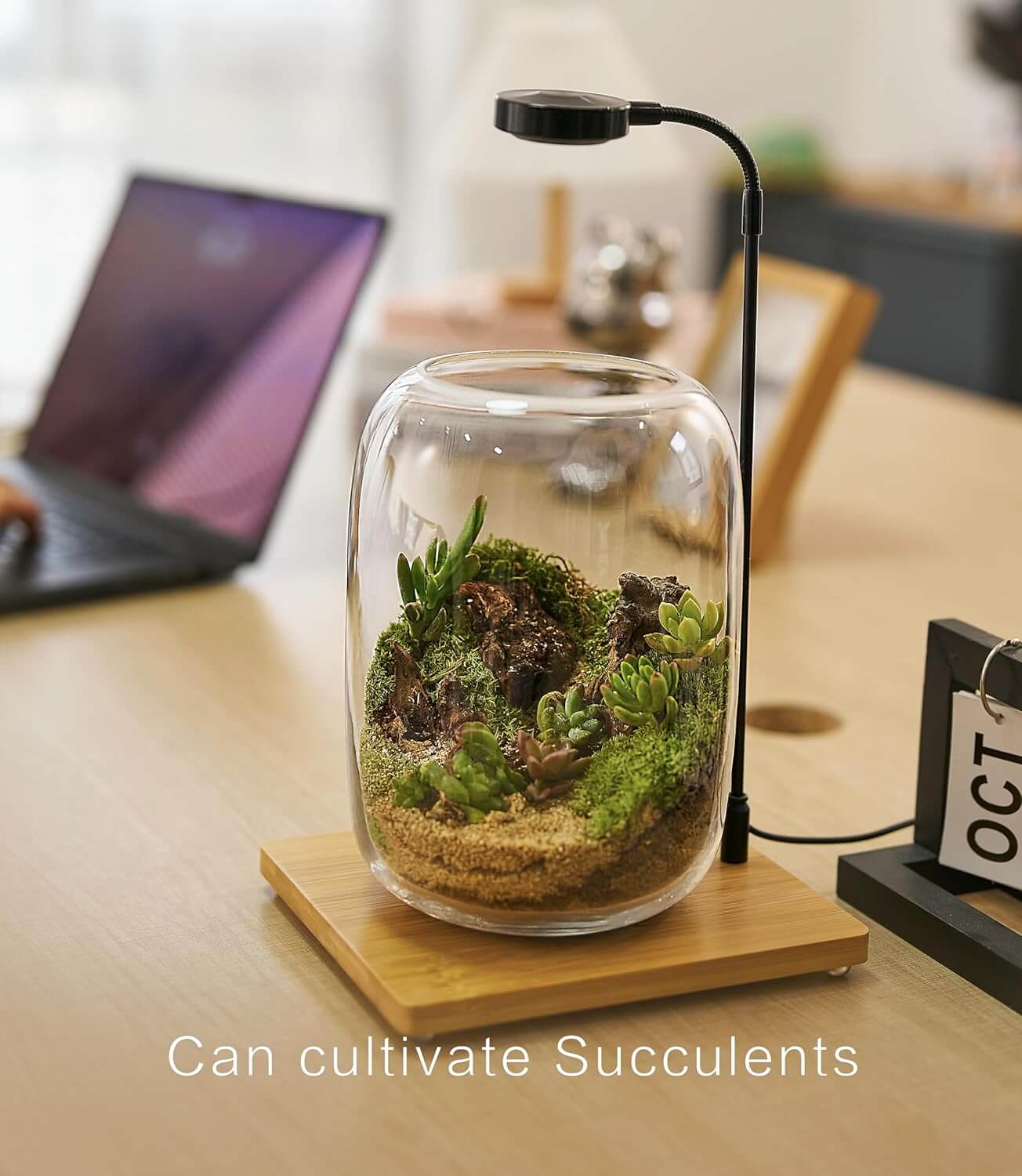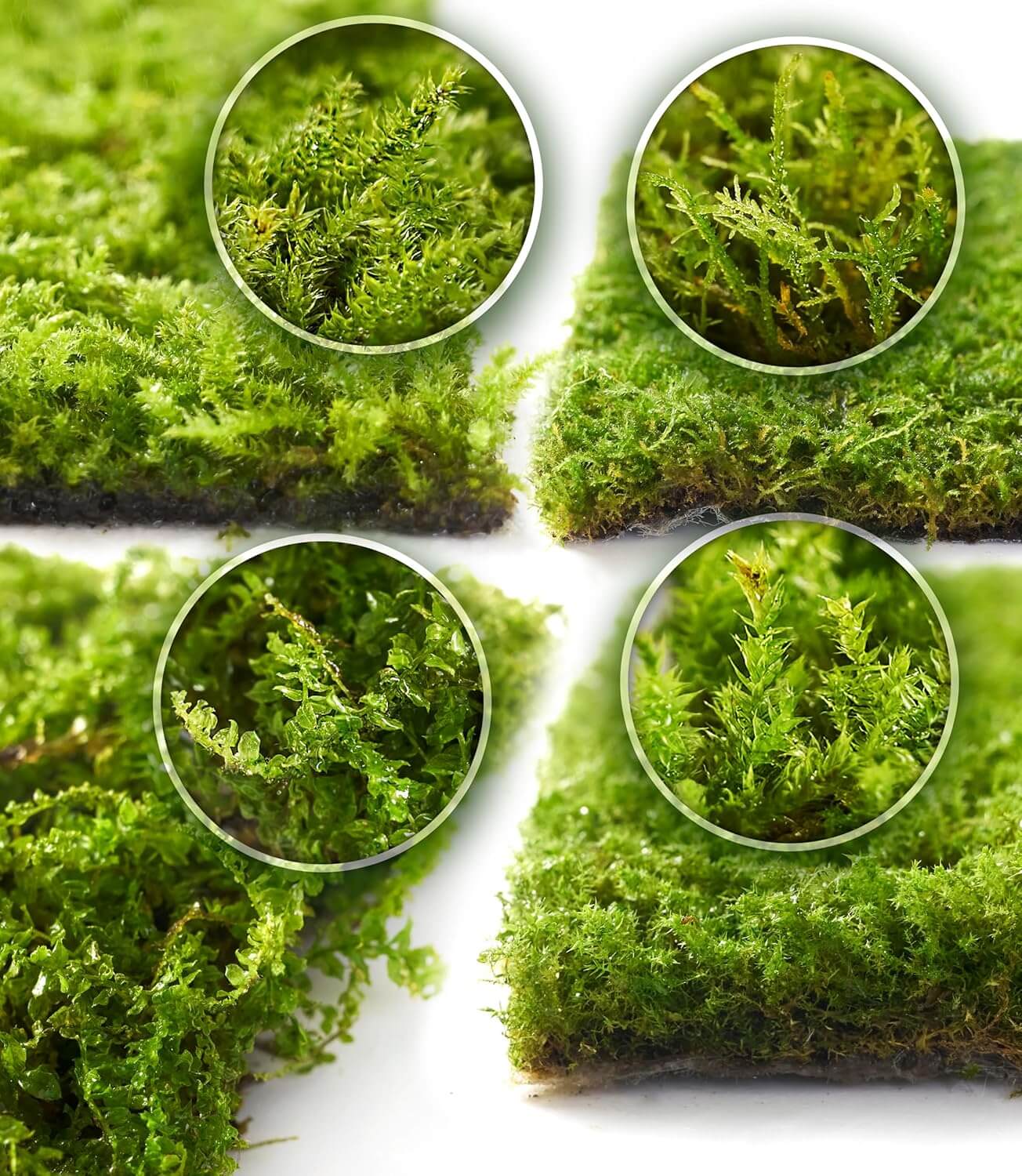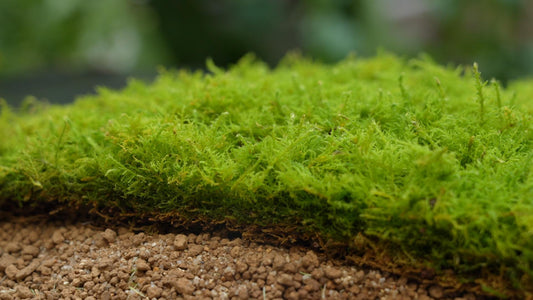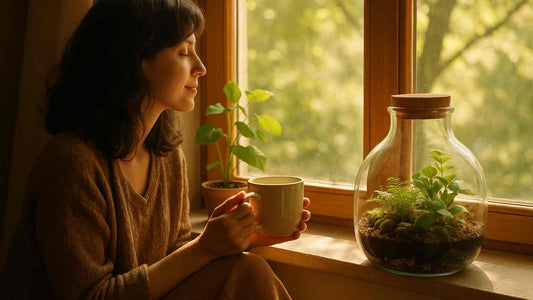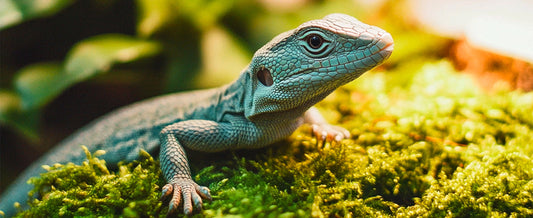Hypnum plumaeforme Care Guide – Soft Feather Moss Tips
Introduction
Hypnum Cupressiforme is a classic creeping moss whose name comes from its cypress-like branching pattern. Common across temperate regions worldwide, this species is a staple in ground-covering moss communities. Known for its feathery texture and impressive spreading ability, it plays a key role in terrarium design, vertical moss walls, bonsai landscaping, and other artistic and ecological applications.
I. Morphological Features
- Stem: Long and slender with feather-like, oppositely arranged branches. The overall structure is delicate and soft.
- Leaves: Curved like a sickle, arranged closely to the stem with fine serrations. They unfurl when moist and curl inward when dry.
- Color: New growth appears light green, maturing to dark green or yellowish green. The overall look is delicate and soft.
- Height: Grows to 1–2.5 cm (about 0.39–0.98 inches), with creeping runners that can extend beyond 10 cm (around 3.94 inches).
II. Natural Habitat and Environmental Tolerance
- Native Range: Found in temperate forests across the Northern Hemisphere, including Europe, Asia, North America.
- Typical Environments: Thrives on humus-rich soils, damp rocks, tundra terrain, and streamside cliffs.
- Light Preferences: Prefers moderate diffused light; avoid direct exposure to intense sunlight.
- Humidity Range: Optimal at 60%–85% relative humidity.
- Temperature Range: Best growth between 12°C–24°C (54°F–75°F). Dormant below 5°C (41°F), growth slows significantly above 30°C (86°F).
III. Cultivation and Maintenance Tips
1) Recommended Substrate Mix
- Recommended Mix: 50% peat moss + 30% coco coir + 20% perlite or pumice.
- PH Level: Slightly acidic, ideally between 5.5–6.5.
- Request: Should be light, well-aerated, and fast draining.
2) Light and Ventilation
- Light Intensity: Recommended range is 400–1000 Lux.
- Placement: Ideal near east- or north-facing windows, or under soft LED lighting. Avoid direct sun exposure.
- Ventilation: In closed systems, open lids 2–3 times weekly for 30 minutes to prevent mold buildup.
3) Watering Schedule
- Method: Use fine mist spray to maintain even substrate moisture.
- Frequency: Daily in warm months; every 2–3 days in winter or during cooler seasons.
IV. Propagation and Spreading
- Propagation Method: Primarily propagated through stem cuttings.
- How-To: Trim 2–4 cm segments and lay them flat on moist substrate without burying them.
- Growth Timeline: Initial attachment in about 10 days; full green mat coverage within 4–5 weeks.
- Note: Maintain moisture and partial shade to ensure successful spread.
V. Common Issues & Care Solutions
|
Symptom |
Cause |
Solution |
|
Yellowing Tips |
Excess light or low humidity |
Move to a shadier spot; increase misting |
|
Blackened Stems |
Waterlogged soil, poor airflow |
Prune damaged parts, improve drainage and ventilation |
|
Dull Appearance |
Insufficient light or nutrients |
Add a light source, apply diluted low-nitrogen fertilizer (1:1500) |
VI. Ecological and Decorative Uses
- Terrarium Base Layer: Often used alongside Thuidium and Leucobryum mosses to add texture and depth.
- Vertical Moss Walls: Perfect for soft transitions and edge blending in moss murals.
- Reptile Enclosures: Well-suited for high-humidity tropical tanks housing dart frogs or geckos.
VII. Summary
Thanks to its superior spread and creeping growth pattern, Hypnum cupressiforme is both visually dynamic and ecologically resilient. It provides a lush, stable groundcover with broad adaptability in micro-landscape settings. Proper control of light, moisture, and air ensures long-term success, making it a foundational "carpet moss" in terrarium ecosystems.
Frequently Asked Questions
What humidity does Hypnum plumaeforme need?
It thrives at 60–85% humidity with diffused light—ideal for terrariums and moss walls.
How to propagate Hypnum plumaeforme?
Use 2–3 cm stem cuttings placed on moist substrate—expected to anchor in ~10 days and spread within 4–5 weeks.
